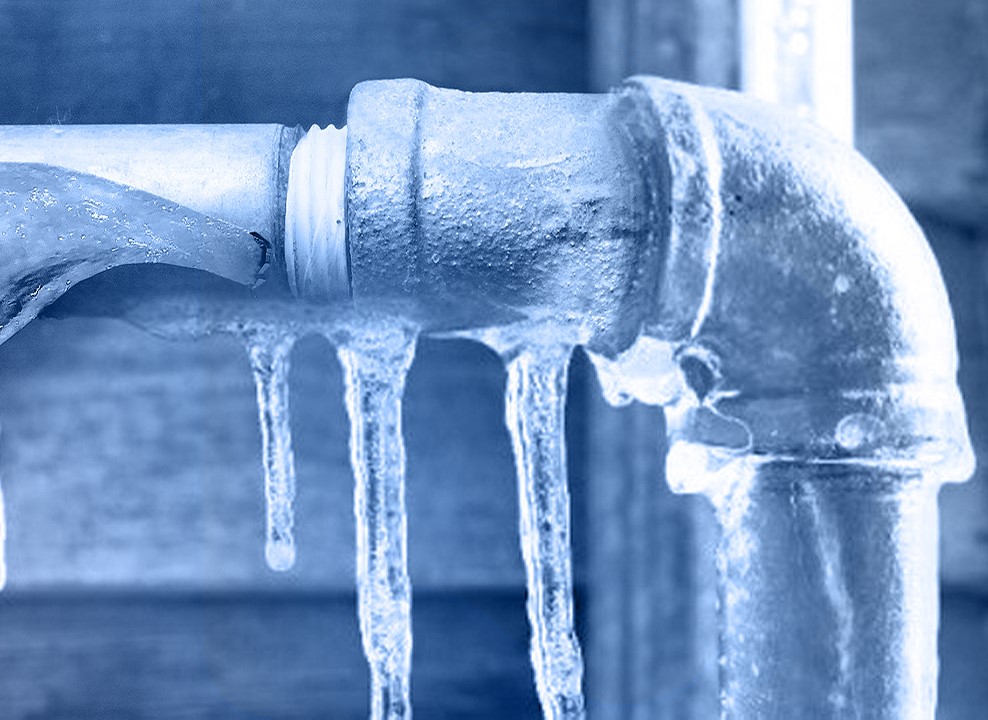How to Protect Plumbing System from Cold Weather: Critical Advice
How to Protect Plumbing System from Cold Weather: Critical Advice
Blog Article
What are your opinions about 6 Ways to Prevent Frozen Pipes?

Winter can damage your plumbing, specifically by freezing pipes. Below's exactly how to prevent it from taking place and what to do if it does.
Introduction
As temperature levels drop, the danger of frozen pipelines boosts, possibly resulting in pricey fixings and water damage. Recognizing how to avoid icy pipes is crucial for house owners in cool climates.
Avoidance Tips
Shielding vulnerable pipes
Wrap pipelines in insulation sleeves or make use of warmth tape to safeguard them from freezing temperature levels. Concentrate on pipes in unheated or exterior areas of the home.
Heating methods
Maintain indoor rooms sufficiently heated up, particularly locations with pipes. Open cupboard doors to enable warm air to circulate around pipes under sinks.
How to identify icy pipelines
Seek reduced water flow from taps, unusual odors or sounds from pipelines, and noticeable frost on subjected pipes.
Long-Term Solutions
Architectural changes
Think about rerouting pipes far from outside walls or unheated locations. Include additional insulation to attics, cellars, and crawl spaces.
Upgrading insulation
Invest in high-quality insulation for pipelines, attics, and wall surfaces. Appropriate insulation aids preserve consistent temperature levels and minimizes the risk of icy pipelines.
Securing Exterior Plumbing
Yard hose pipes and exterior faucets
Detach and drain pipes garden pipes before winter. Set up frost-proof faucets or cover exterior faucets with protected caps.
Comprehending Icy Pipes
What creates pipes to freeze?
Pipes ice up when revealed to temperature levels below 32 ° F (0 ° C) for extended periods. As water inside the pipes ices up, it broadens, taxing the pipeline wall surfaces and potentially causing them to rupture.
Dangers and damages
Frozen pipes can result in water supply disturbances, property damage, and expensive fixings. Ruptured pipelines can flooding homes and create extensive structural damage.
Signs of Frozen Pipes
Recognizing icy pipelines early can avoid them from bursting.
What to Do If Your Pipelines Freeze
Immediate actions to take
If you suspect icy pipelines, keep taps available to alleviate stress as the ice melts. Use a hairdryer or towels taken in warm water to thaw pipes gradually.
Verdict
Stopping icy pipes calls for proactive procedures and fast reactions. By recognizing the causes, indications, and safety nets, homeowners can shield their plumbing during winter.
5 Ways to Prevent Frozen Pipes
Drain Outdoor Faucets and Disconnect Hoses
First, close the shut-off valve that controls the flow of water in the pipe to your outdoor faucet. Then, head outside to disconnect and drain your hose and open the outdoor faucet to allow the water to completely drain out of the line. Turn off the faucet when done. Finally, head back to the shut-off valve and drain the remaining water inside the pipe into a bucket or container. Additionally, if you have a home irrigation system, you should consider hiring an expert to clear the system of water each year.
Insulate Pipes
One of the best and most cost-effective methods for preventing frozen water pipes is to wrap your pipes with insulation. This is especially important for areas in your home that aren’t exposed to heat, such as an attic. We suggest using foam sleeves, which can typically be found at your local hardware store.
Keep Heat Running at 65
Your pipes are located inside your walls, and the temperature there is much colder than the rest of the house. To prevent your pipes from freezing, The Insurance Information Institute suggests that you keep your home heated to at least 65 degrees, even when traveling. You may want to invest in smart devices that can keep an eye on the temperature in your home while you’re away.
Leave Water Dripping
Moving water — even a small trickle — can prevent ice from forming inside your pipes. When freezing temps are imminent, start a drip of water from all faucets that serve exposed pipes. Leaving a few faucets running will also help relieve pressure inside the pipes and help prevent a rupture if the water inside freezes.
Open Cupboard Doors
Warm your kitchen and bathroom pipes by opening cupboards and vanities. You should also leave your interior doors ajar to help warm air circulate evenly throughout your home.

We had been brought to that editorial on How to Prevent Your Pipes From Freezing from a friend on another web property. Enjoyed our entry? Please quickly share it. Let other people locate it. I thank you for your readership.
Call Today Report this page